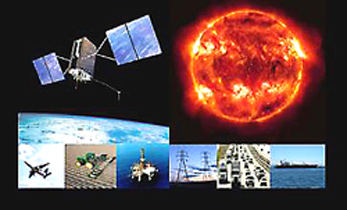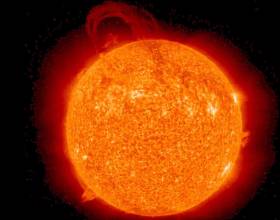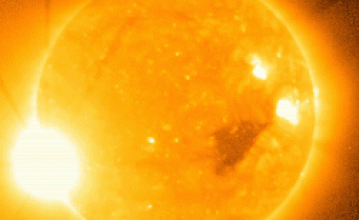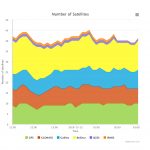 Communication/Navigation Outage Forecasting System (C/NOFS) satellite, General Dynamics
Communication/Navigation Outage Forecasting System (C/NOFS) satellite, General DynamicsOn Wednesday (April 16), a U.S. Air Force team successfully launched the Communication/Navigation Outage Forecasting System (C/NOFS), an experimental satellite designed to monitor the ionosphere and predict conditions that would disturb radio communications, including GNSS signals.
The satellite was ultimately deployed from a Pegasus rocket following an air launch from a Lockheed L-1011 that had taken off from Kwajalein Atoll in the mid-Pacific Ocean. First transmissions from the spacecraft were acquired shortly after it reached orbit.
On Wednesday (April 16), a U.S. Air Force team successfully launched the Communication/Navigation Outage Forecasting System (C/NOFS), an experimental satellite designed to monitor the ionosphere and predict conditions that would disturb radio communications, including GNSS signals.
The satellite was ultimately deployed from a Pegasus rocket following an air launch from a Lockheed L-1011 that had taken off from Kwajalein Atoll in the mid-Pacific Ocean. First transmissions from the spacecraft were acquired shortly after it reached orbit.
The low-earth-orbiting C/NOFS follows an equatorial track, providing data from regions in which space weather is particularly turbulent. The U.S. Department of Defense will use information provided by C/NOFS to forecast scintillation-caused communication outages from satellites to military personnel, allowing them to plan operations accordingly.
“I am just overwhelmed and ecstatic by the results of this morning’s launch,” said Col. Stephen Hargis, Director of the DoD Space Test Program and Space Development Group commander. “I believe C/NOFS will have a huge impact on the battlefield and help bring more of our troops home alive.”
Operational goals of C/NOFS include detecting regions of active scintillation, forecasting regions of scintillation three to six hours before its onset, and improving estimates of scintillation probability. The spacecraft was designed and built by General Dynamics Advanced Information Systems, Integrated Space Systems, in Gilbert, Arizona.
A GPS receiver that will sense ionospheric conditions using occultation techniques is among the six-sensor suite carried by the spacecraft. The C/NOFS Occultation Receiver for Ionospheric Sensing and Specification (CORISS) is a dual-frequency GPS receiver that measures line-of-sight total electron count (TEC), on-board scintillation indices and spectra, stratospheric temperature profiles, and high rate scintillation products.
CORISS is a modified version of space-borne receivers used for a variety of space research projectsthat are based on the Blackjack space-qualified receiver developed by NASA’s Jet Propulsion Lab in the 1990s by modifying an Allen Osborne Associates GPS receiver.
Project participants include the National Aeronautics and Space Administration the Naval Research Laboratory, the University of Texas, the engineering firm Jackson and Tull, and the National Polar Orbiting Environmental Satellite System Joint Program Office.
The mission integration for the launch was a collaborative effort between the Department of Defense (DoD) Space Test Program, the Space and Missile Systems Center (SMC) at Los Angeles Air Force Base, the SMC’s Space Development and Test Wing, and the Air Force Research Laboratory.
As the Earth enters a period of increasing solar activity, the effects of phenomena such as sunspots on L-band GNSS user equipment is drawing an increasing amount of attention. An article by Joe Kunches in the November/December 2007 issue of Inside GNSS highlighted the effects of space weather on GNSS and the efforts of the National Oceanic and Atmospheric Administration (NOAA) Space Weather Prediction Center (SWPC) to aid the GNSS community in dealing with these effects.
Space weather effects and forecasting will also be the subject of a couple of upcoming events, including the 12th International Ionospheric Effects Symposium (IES2008) taking place May 13-15 in Alexandria, Virginia, and the 2nd Space Weather Enterprise Forum May 21 in Washington, D.C.





